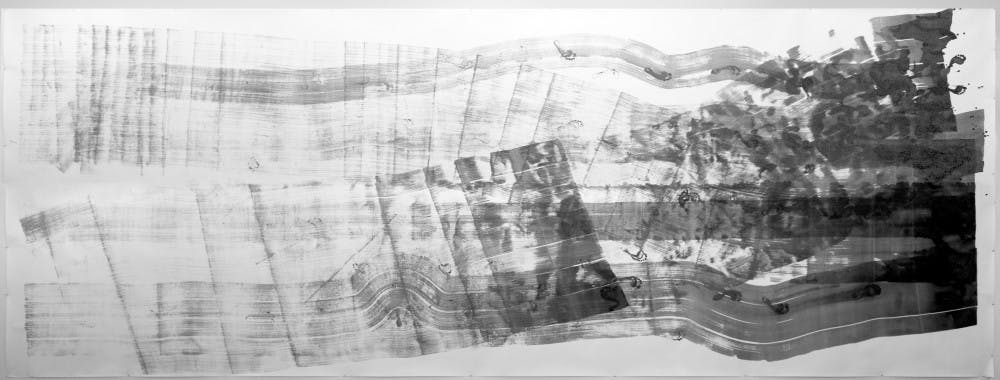Two new exhibits at the Katzen Arts Center, “John Cage’s STEPS: A Composition for a Painting, Selected Watercolors, Various Objects, and Ephemera” and “Occupy This!” defy conventional standards of art.
The exhibits opened Sept. 1. Both exhibits deal with the problem of inaction and recall the volatile nature of the 1960s.
Documenting the Occupy Movement
“Occupy This!” incorporates photography, film and art from the Occupy movement around the world, with a focus on Occupy D.C.
The exhibit features a loose reconstruction of the original “People’s Library,” a collection of books and knowledge for Occupy D.C. participants to share. The library adds an aspect of interactivity to the exhibit. Museum visitors are welcome to contribute to and borrow from the makeshift library. The library seems to have a voice of its own, decrying injustice through the signs that surround it.
The exhibit also focuses on the historical movements that inspired Occupy. “Occupy This!” includes a collection of photographs and a documentary featuring the Bonus Army, a group of World War I veterans that marched on D.C. following the start of the Great Depression to demand full reimbursement of their salaries.
The exhibit as a whole is fascinating because the movement and the events that it depicts hit close to home.
Photographs of social movements from the past century recall the appearance of Occupy.
“Movements look the way they do because of images that have come out of the culture,” said AU Museum Director and Curator Jack Rasmussen during a tour of the exhibits.
Celebrating John Cage
“John Cage’s STEPS” celebrates famed composer, artist and writer John Cage. Cage is most famous for his musical composition “4’33’’,” which is four minutes and 33 seconds of silence. It allows listeners to “experience everything [they] wouldn’t normally hear,” Rasmussen said. This mentality drives the exhibit.
The exhibit is part of the John Cage Centennial Festival in D.C. The Cage exhibits also include pieces by choreographer Merce Cunningham, which use motion as an unexpected medium. Cunningham used a wheelchair as a paintbrush in one work while footprints decorate another. The pieces vibrate with the chaotic movements used to create them. The works are at once intentional and spontaneous.
Cage’s simple works have a musical quality, reflecting his background. The abstractions in his works seem improvised and in some cases incomplete. These qualities force the viewer to reflect on the artist’s intentions.
“In a way, [Cage] was just as subversive of the institution as Occupy,” Rasmussen said.
More to Come
On Sept. 15, two more exhibits, “Revelation: Major Paintings” by Jules Olitski and “PLATFORMS” by the Washington Sculpture Group, will open at the museum. In the spirit of Occupy, students will host a gallery talk addressing the issue of student debt on the same day.
The exhibits are an effort by the museum to motivate students to get involved, Rasmussen said.
Rasmussen was interested in creating a show “that was about more than just looking at pictures.”
The show certainly succeeds in this respect. “John Cage’s STEPS” and “Occupy This!” are thought-provoking, multi-faceted exhibits that will prove especially fascinating to museum-goers interested in history.
The exhibits are open through Oct. 21.
thescene@theeagleonline.com





